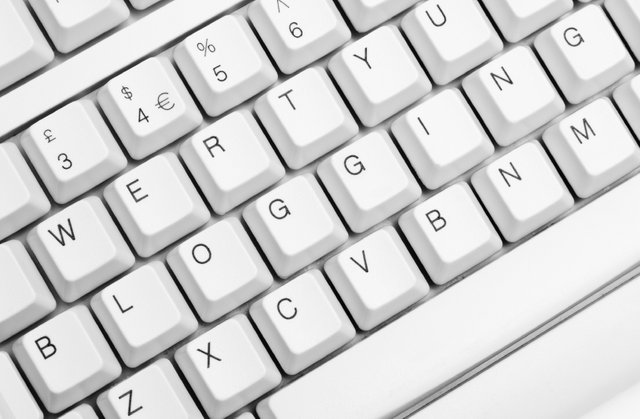Silver Recovery From Computer Keyboard's
In my last post I described how to recover gold and silver from circuit boards found in computers and green board electronics. In this post I will describe how to recover silver from your keyboard.
As always, you should check your local and state laws regarding the possession and disposal of the chemicals used for this process and always remember to take any and all safety precautions.
First you will need a keyboard that is no longer used or works. Start by removing all of the screws that hold the back of the keyboard on. Once you have these screws removed you have access to all of the keyboards interior components.
You will notice that a keyboard is a very simple device without many parts and pieces. The piece we will be focusing on is a piece of mylar material covered with small grey dots and lines. These dots and lines are where we are going to get our silver from. Be sure to save the small circuit boards for processing.
Now that you have your mylar sheet you will need a glass container to mix your chemicals. The container should be flat such as a cake dish so that your mylars will fit into them. If you do not have a container that the mylars will fit into, you can cut the mylars so that they will fit. You will also need a dish to rinse the mylars once they are done their process and a spray bottle of tap water.
In your flat dish add a 50/50 mix of nitric acid and hydrogen peroxide. Keep in mind that you will not need a great amount of solution for this process. I suggest a mix of 50ml each for a total of 100ml of solution. This process should be done in a well ventilated area or under a fume hood.
Now, while taking all safety precautions, hold the mylars at the edge with a pair of plastic or Teflon coated tweezers. Slide the mylar into the solution and hold it there. You will notice a change in the color of the spots and lines on the mylar within 5 to 15 seconds. The color change can darken the spots to almost black or clear them up so they appear almost transparent. Once this color change has taken place, the silver has been dissolved.
To rinse, simply remove the mylar from the solution and let the acids drip as much as possible back into the container. Once they have dripped back as much as possible, move to the rinse dish and gently spray the mylar with the tap water in your spray bottle and catch the runoff in your rinse dish. You will notice that the water in the rinse dish will become cloudy. This is because the chlorides in the tap water react with the acids and free silver nitrate salt into suspension. Let this sit for about 24 hours to let the silver settle to the bottom of the dish. Then pour off the liquid and recover your silver.
Now, you should have all of your mylars washed and rinsed and your rinse is settling. You now take the acid and pour it from your flat dish to a normal beaker. The solution should be clear with no solids floating around. If there are solids in your solution, filter the solution to clean out the solid matter.
To precipitate the silver from your acid mixture, simply add a few milliliters of hydrochloric acid, stir, and let the solution sit for a few hours while the silver settles to the bottom of the container.
Once the silver has settled you will be able to see it at the bottom of the container. The silver will have the appearance of grey cottage cheese. You can now pour off the solution and recover your silver.
Once recovered, the silver should be washed with water to ensure that all off the acid is removed. When the silver is clean, allow it to dry and then you are ready to melt your silver dust into solid silver.
Note: Through some research I have found that an average yield for silver from mylars is about 4.5 grams per 25 mylars processed. So, for this to be worthwhile you will need a significant amount of mylars. However, if you do have a large amount of keyboards that you can process, then these procedures can benefit you greatly!
